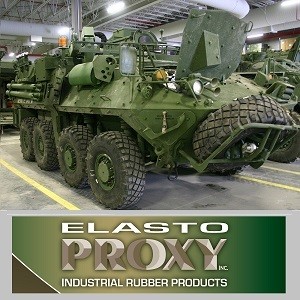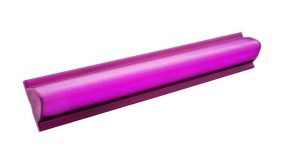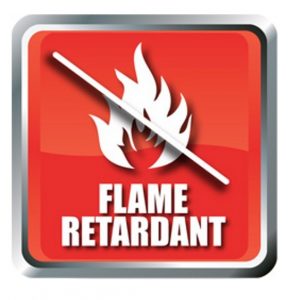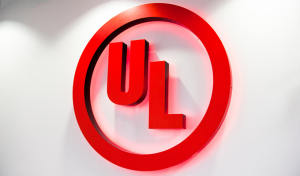Window Gaskets: Design and Installation
Window gaskets provide sealing and insulation and help hold window glass in place. They are made of rubber and installed along the edges of fixed windows.
Window gaskets provide sealing and insulation and help hold window glass in place. They are made of rubber and installed along the edges of fixed windows.
Elasto Proxy custom-fabricates polyurethane foam for vibration control and shock absorption.Excessive amounts of shock and vibration can cause equipment to malfunction and systems to fail. In some cases, such as…
https://youtu.be/AUqWcP6Ip1s Military vehicle insulation for heat, noise and vibration protects warfighters and equipment against conditions that can stop land systems in their tracks. These composite structures are used in engine…
 Elasto Proxy is an experienced provider of sealing and insulation solutions to the defense industry. Learn about our capabilities, and how we can help you with military projects.
Elasto Proxy is an experienced provider of sealing and insulation solutions to the defense industry. Learn about our capabilities, and how we can help you with military projects. For 30 years, Elasto Proxy has supplied North American defense contractors with low-to-medium volume quantities of high-quality rubber and plastic parts. Our first customer, Atlantic Defense Industries, deployed our sealing solutions on the boom hoist for a ten-ton military truck. Since then, Elasto Proxy has won numerous defense-related contracts for projects in Canada and the United States.
As a registered member of Canada’s Controlled Goods Program (CGP), Elasto Proxy meets all requirements for record keeping, training programs, security briefings, and inspections. The Controlled Goods Certificate (CGC) that Elasto Proxy holds demonstrates our commitment to the defense industry, and we work closely with leading trade groups such as the Canadian Association of Defense and Security (CADSI).
Today, Elasto Proxy is a global company with offices and warehouses in Canada and the United States. Our headquarters in Boisbriand, Quebec is also our production facility, a place where highly-skilled personnel combine traditional pride in craftsmanship with state-of-the-art technologies. Facilities in Newmarket, Ontario and Simpsonville, South Carolina strengthen our position in the defense supply chain. (more…)
Cab insulation for heavy equipment absorbs engine noise and provides a finished appearance to the interior of the cab or cabin where the operator or driver sits. Examples include headliners,…
Vibration dampers dissipate the energy that causes resonant vibrations in built structures. Vibration, a back-and-forth movement or oscillation, produces structure-borne noise in machine enclosures, engine bays, generator sets, heavy trucks,…
 TPE profiles are replacing EPDM rubber in applications such as mobile equipment, food equipment, and infrastructure. Unlike EPDM, thermoplastic elastomers (TPE) are recyclable. That’s especially important in Europe, where manufacturers are moving away from petroleum-based materials.
TPE profiles are replacing EPDM rubber in applications such as mobile equipment, food equipment, and infrastructure. Unlike EPDM, thermoplastic elastomers (TPE) are recyclable. That’s especially important in Europe, where manufacturers are moving away from petroleum-based materials.
In North America and other parts of the world, the availability of TPEs in custom colors is driving demand. TPEs can cost more than EPDM profiles, but thermoplastic rubbers (TPRs) – as TPEs are sometimes called – offer important advantages for product designers and engineers. Are TPE profiles the right choice for your next project? (more…)
 Flame retardant rubber helps to protect people and property from the devastating effects of fire. By stopping or slowing the spread of flame, these elastomers reduce the rate and intensity of burning. They can also limit the release of smoke and toxins while increasing the amount of time that people have to escape from life-threatening situations. Applications for these specialized compounds include electronic enclosures and the interiors of buses, trains, and subways.
Flame retardant rubber helps to protect people and property from the devastating effects of fire. By stopping or slowing the spread of flame, these elastomers reduce the rate and intensity of burning. They can also limit the release of smoke and toxins while increasing the amount of time that people have to escape from life-threatening situations. Applications for these specialized compounds include electronic enclosures and the interiors of buses, trains, and subways.
For engineers, it’s important to understand that all flame retardant rubber is not the same. There are different classes of flame retardants, chemicals that are added or applied during compounding. There are also different flammability standards by industry and within the same industry. For example, the mass transit industry has so many different flame, smoke, and toxicity (FST) standards that simply asking for an “FST compound” or “flame retardant rubber” risks getting you the wrong material. (more…)
 UL gasket materials can provide flame resistance, ingress protection, or other specialized properties. For engineers, it’s important to understand what the different standards from Underwriters Laboratories (UL) mean. It’s also worth knowing if UL gasket materials are truly required in your component-level designs. Otherwise, you may “over-engineer” your gaskets and pay too much for materials.
UL gasket materials can provide flame resistance, ingress protection, or other specialized properties. For engineers, it’s important to understand what the different standards from Underwriters Laboratories (UL) mean. It’s also worth knowing if UL gasket materials are truly required in your component-level designs. Otherwise, you may “over-engineer” your gaskets and pay too much for materials.
Compared to commodity elastomers, the prices for UL compounds are higher. The minimum order quantities (MOQs) are greater, too. In the case of rubber extrusions, the compounder has to use special tooling to account for different flow rates. The number of suppliers who offer UL materials is also limited. Unless you really need them, UL gasket materials can add unnecessary expenses to your application.
Of course, some sealing and insulation projects require UL gasket materials to meet specific requirements. In this blog entry, the first in our September series about compound selection, Elasto Proxy explains what engineers need to know about UL gaskets for flame resistance and ingress protection. These aren’t the only UL standards for gaskets, but they’re the most common – and they can be confusing. (more…)
Unmanned vehicles need custom seals, gaskets, and insulation that can withstand marine environments. Commercial drones and the electronics cases that are used with them also need reliable sealing and insulation. Elasto Proxy, a leader in custom-fabricated rubber products, can provide unmanned vehicle OEMs and their suppliers with value-added manufacturing that includes design assistance, help with material selection, prototyping, and low-to-medium volume quantities.
Previous articles in this series have described Elasto Proxy’s capabilities with unmanned aerial vehicles (UAVs) and unmanned ground vehicles (UGVs). In the conclusion to this three-part series, we’ll take a look at how Elasto Proxy can solve sealing and insulation challenges for unmanned surface vehicles (USVs), unmanned underwater vehicles (UUVs), and commercial drones. We’ll also take a look at sealing and insulation solutions for unmanned vehicle accessories. (more…)